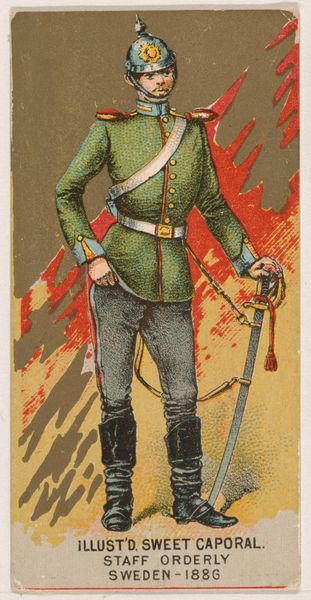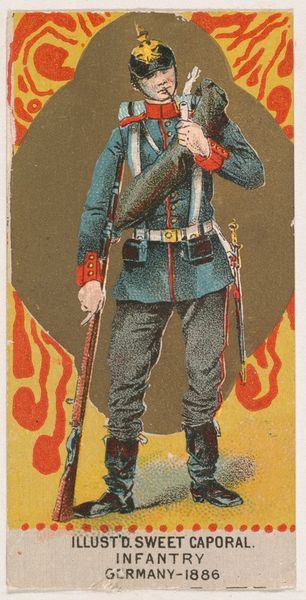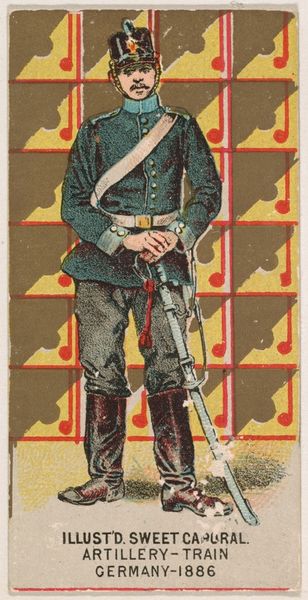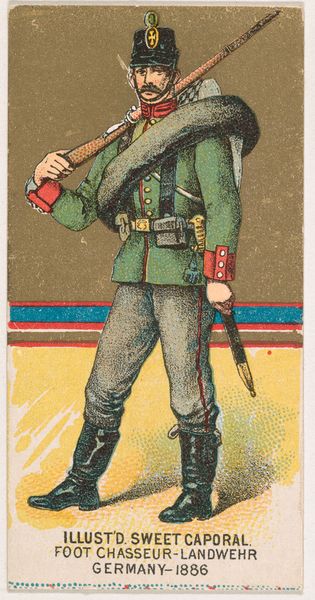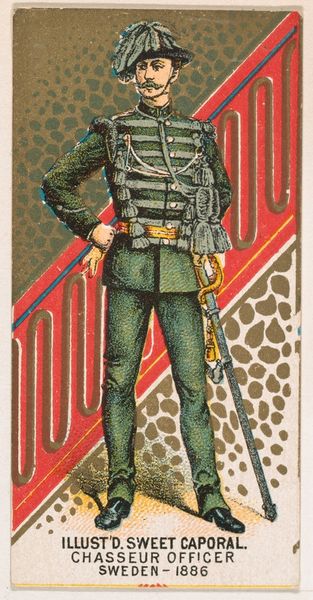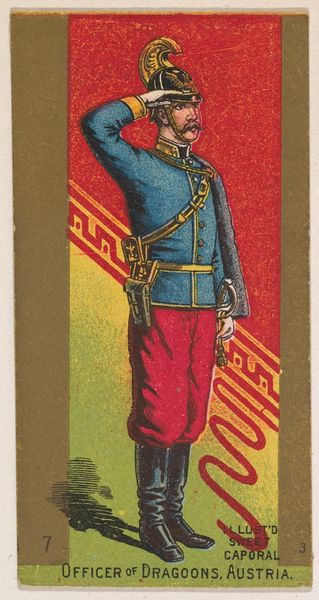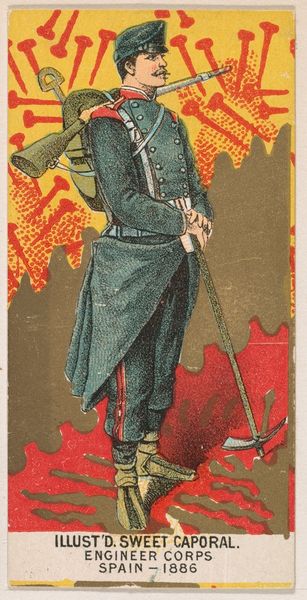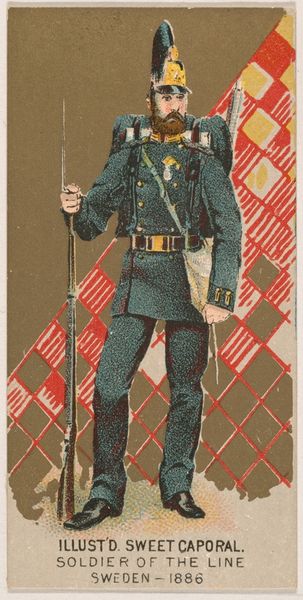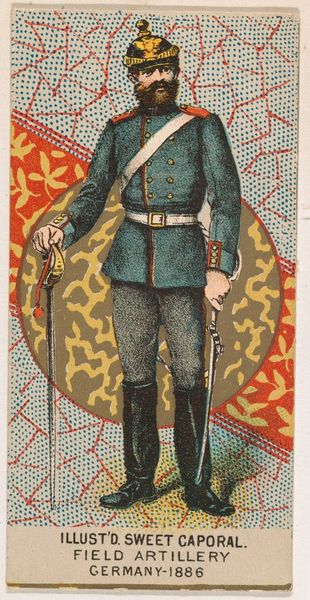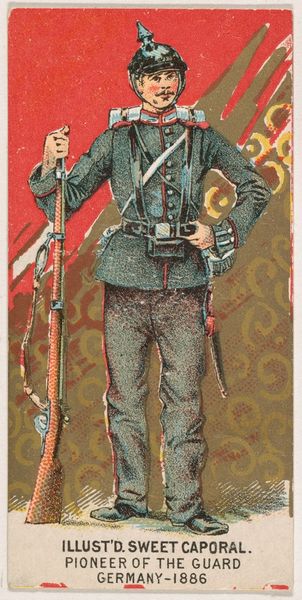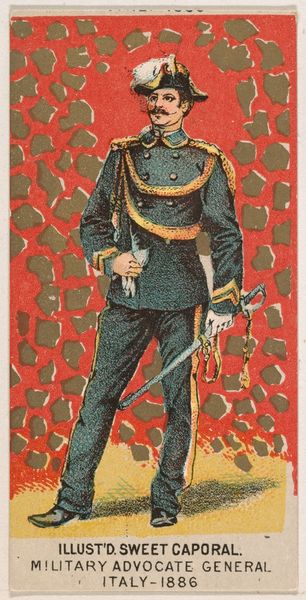
Saxon Chasseur, Germany, 1886, from the Military Series (N224) issued by Kinney Tobacco Company to promote Sweet Caporal Cigarettes 1888
0:00
0:00
drawing, print
#
drawing
# print
#
soldier
#
men
#
history-painting
Dimensions: Sheet: 2 3/4 × 1 1/2 in. (7 × 3.8 cm)
Copyright: Public Domain
Editor: This chromolithograph, “Saxon Chasseur, Germany, 1886” was made by the Kinney Tobacco Company to promote their Sweet Caporal Cigarettes. The soldier’s green uniform contrasts strikingly with the decorative background, which is reminiscent of flames. I wonder how a cigarette company decided on this subject matter for their product advertisement? Curator: It's fascinating, isn't it? These tobacco cards, like this one, often reflect the burgeoning sense of nationalism and militarism sweeping Europe in the late 19th century. What does it mean to portray military might on an item as common as a cigarette card? It encouraged consumers to associate smoking with notions of strength, patriotism, and perhaps even imperial power. The working classes were targeted, yes? Who do you imagine they thought a soldier embodied? Editor: Someone to admire, a symbol of German strength. It’s unsettling that war can be marketed this way. Curator: Precisely. We have to consider who’s included and excluded in the story being told. This romanticized depiction of a soldier serves to normalize military expansion, glossing over its brutal realities. Consider too the imperial project--where would Saxon Chasseurs have served and who might they have dispossessed to do it? Editor: That’s a grim but important point. By buying the cigarettes and collecting these cards, consumers became implicated in a subtle form of support for military ideals and potentially overlooking atrocities that would be outside their daily awareness. Curator: Precisely. It raises questions about complicity and the responsibilities we have as consumers of media, then and now, to critically examine the messages we’re absorbing. It also points to who benefits from such portrayals and at whose expense. Editor: This makes me realize that this small, seemingly innocuous card actually opens up a much larger and quite relevant discussion about marketing, militarism, and responsibility. Curator: Absolutely. It highlights how seemingly innocent images can be powerful tools in shaping public opinion and perpetuating certain ideologies. Hopefully we all realize what tobacco companies know well, that representation really matters.
Comments
No comments
Be the first to comment and join the conversation on the ultimate creative platform.
